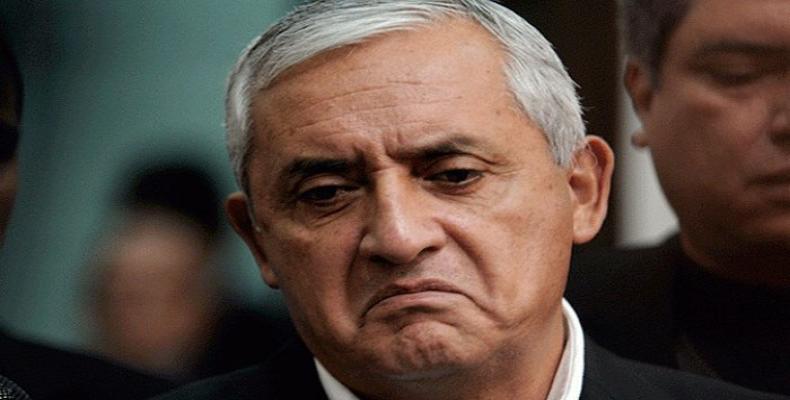The Guatemalan president, Otto Perez Molina resigned Wednesday night after the Public Ministry presented a warrant for his arrest for his role in the so-called “La Linea” corruption case.
Below is how events unfolded ending in his resignation.
April 25: The indigenous lawmaker of the Winaq Movement of Guatemala, Amilcar Pop, denounces President Otto Perez Molina to the Attorney’s Office, as well as the vice president, Roxana Baldetti, for having committed eight alleged crimes: criminal association and illicit gains.
May 8: Operations of the fraudulent “The Line” network come to light, after the resignation of Roxana Baldetti, two days after the Public Ministry and the International Commission Against Impunity in Guatemala (CICIG) accused her former private secretary, Juan Carlos Monzon, of being the leader of the group. The same day, Baldetti steps down from her post in middle of two mass demonstrations that demanded the departure of the president and the replacement of the cabinet.
May 9: With 149 votes in favor, 0 against and 9 absences, Congress accepts the resignation of Baldetti.
June 22: Guatemalan authorities began an investigation against Baldetti for the corruption scandal and siezed eight properties of her husband Mariano Paz.
Aug. 22: Finance Minister Sergio de la Torre, Education Minister Cynthia Del Aguila, and Competitions Commissioner Juan Carlos Paiz hand in their resignation, claiming that “they didn't know that there was a contraband network,” in reference to the fraud case.
Aug. 23: As anti-government protests snowball in size, Perez Molina leaves the public stage and is not seen for more than 24 hours. #NoApareceOtto (Otto does not appear) trends on Twitter.
RELATED: Who Is Otto Perez Molina?
Aug. 24: Another seven officials from the Guatemalan government resign, this time those in the roles of Communications, Victor Corado, Finances, Dorval Carias, and the Planning Secretary, Ekaterina Arbolievna Parrilla. Another two vice ministers of communication and a vice minister of public finances also step down. The protest of the Guatemalan people gains more traction on social media, especially on Twitter where the hashtag #YoNoTengoPresident (I don’t have a president) becomes a top trend.
Aug. 25: The Public Ministry reveals an audio-recording linking Perez Molina directly with “The Line.” In the conversation, the Guatemalan president is heard ordering Muñoz to change the chief of Human of Resources of the SAT and asks him for explanations as to why the change was delayed. According to the Public Ministry this is the key post to maintain control of the four important customs officers in the country.
Aug. 26: Baldetti is sent to a communal prison called Santa Teresa, in Guatemala City, after a judge rejects an application for house arrest and orders her to be moved to the female penitentiary center.
Aug. 27: Thousands of Guatemalans begin a national strike in the capital and in the key regions, to demand once again the resignation of Perez Molina. The Attorney General’s office recommends that the president step down. Guatemalan Congress draw lots to form an investigative commission. The investigative commission recommends revoking the impunity of the president.
Aug. 31: Perez Molina’s defense team presents a new application for protection before the Constitutional Court. Meanwhile, during a press conference called over the denunciations, Perez Molina says that the phonecall used as proof of his participation in “The Line” case was taken out of context. He insists that he will not step down from his post.
Sept. 1: Guatemalan Congress decides to withdraw immunity from the former president on considering that sufficient evidence exists to begin judicial proceedings, for which the former vice president Roxana Baldetti was detained.
Sept. 2: The Public Ministry broadcasts a warrant for the capture of Perez Molina.
Sept. 3: In the early hours of Thursday it is confirmed that Otto Perez Molina has handed in his letter of resignation.


